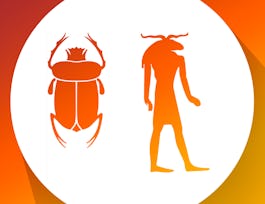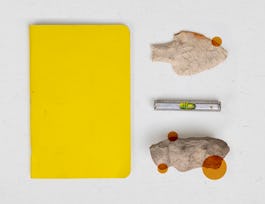This course explores Jewish, Christian, and Muslim intercultural relations in Iberia from the Visigothic era (6th century CE) until the creation of Queen Isabel I and King Ferdinand II Catholic Spain (late 15th century). We evaluate the many identities of the peninsula known as Christian Hispania, Jewish Sefarad, and Islamic al-Andalus. We trace the origins and trajectory of conflict between these communities (the Muslim conquest of Spain, Christian Reconquista, prohibitions blocking intermixing of peoples, and expulsions). We aim to understand conflicts within communities as well, such as the tensions between Christian Arian Visigoths and native Catholic Iberians or the fundamentalist North African Almohad Dynasty that rejected the Spanish Umayyad Caliphate’s preference for religious tolerance. We delve into an appreciation of collaboration and coexistence among these communities. We explore the unique role of the Jewish community who Muslims and Christians depended upon as political and cultural intermediaries as well as their intellectual collaborators. We find the history of how peoples attempted to create and manage viable diverse communities. As we study this history, the Honors Track will employ an investigative process (“The Historian’s Craft”) that involves viewing, reading, analyzing, and reflecting on events, peoples, places, and artifacts.



Coexistence in Medieval Spain: Jews, Christians, and Muslims

Instructor: Roger L Martinez
Sponsored by ITC-Infotech
14,892 already enrolled
(133 reviews)
Details to know

Add to your LinkedIn profile
11 assignments
See how employees at top companies are mastering in-demand skills


Earn a career certificate
Add this credential to your LinkedIn profile, resume, or CV
Share it on social media and in your performance review

There are 5 modules in this course
This week introduces the idea of co-existence in medieval Spain. We begin our study of medieval Spain by briefly viewing Roman Spain and then learning about the Visigoths. Supplemental information places medieval Iberia within the contexts of European, Byzantine, and Islamic civilizations. The honors section of the course introduces "The Historian's Craft" and the task of "viewing".
What's included
6 videos29 readings3 assignments1 peer review3 discussion prompts
In this section of the course, we advance our investigation of medieval Spain to learn about Islamic al-Andalus (Islamic Spain) and Jewish Sefarad (Jewish Spain). This includes a study of the Islamic conquest of Visigothic Spain and the subsequent development of the Umayyad Dynasty. We evaluate the complexities of conflicts between religious groups and within religious groups. We witness interfaith collaboration. Islamic sciences are presented as is the Golden Age of the Spanish Jews. We view Islamic art and architecture. Lastly, in our honors section we continue with our study of the Historian's Craft and the task of "reading".
What's included
8 videos16 readings3 assignments1 peer review1 discussion prompt
First, we continue with an investigation of the third principal culture of Iberian Peninsula -- Spanish Christian Hispania. We seek out more specific examples of the Christian kingdom's impact on political, religious, social, intellectual, and economic issues. Next, we examine the rise of the Spanish Christian Kingdom of Castile and Leon and the impact of King Alfonso X "The Learned". We study how Spanish Christians created culture through material objects and architecture. In addition, we explore the complications of Christians governing religious minorities in their lands. The honors section of the course continues with our study of the Historian's Craft and the task of "analyzing".
What's included
5 videos16 readings3 assignments1 peer review
This section of the course presents the end of coexistence in medieval Spain, which was characterized by the creation of new types of peoples (conversos, Jewish converts to Christianity), religious intolerance and expulsions. Multiple examples of the fluctuations in the relationships of Jews, Christians, and Muslims, are examined as Catholic Spain took shape. Special attention is also directed to Spanish archives that preserve this history. We take a closer look at the end of convivencia in the city of Plasencia, Spain, and view a digital video narration. As the Spanish Middle Ages did not occur in a vacuum, we share with you eight scholarly endeavors from the "Global Middle Ages" Project. The honors section of the course continues with our study of the Historian's Craft and the task of "reflecting" and features the music of the Texas Early Music Project.
What's included
15 videos20 readings2 assignments1 peer review2 discussion prompts
The final section of the course prompts students in the Honors Track to interpret and evaluate a historical artifact from medieval Spain (a material object, architecture, or a manuscript). This peer-reviewed project is not a required to complete the course as a regular student.
What's included
7 readings1 peer review1 discussion prompt
Instructor

Offered by
Why people choose Coursera for their career




Learner reviews
133 reviews
- 5 stars
71.64%
- 4 stars
19.40%
- 3 stars
2.98%
- 2 stars
2.98%
- 1 star
2.98%
Showing 3 of 133
Reviewed on Jan 26, 2023
I am an abysmal satisfied about your career service for ours.
Reviewed on Feb 27, 2018
Has a lot of stuff to see and do: quite a few options.
Reviewed on Sep 25, 2021
Fascinating. Clearly and logically presented. An exceptional course.
Recommended if you're interested in Arts and Humanities

Universitat Autònoma de Barcelona

Universitat Autònoma de Barcelona

Rice University

Universidad de los Andes

Open new doors with Coursera Plus
Unlimited access to 10,000+ world-class courses, hands-on projects, and job-ready certificate programs - all included in your subscription
Advance your career with an online degree
Earn a degree from world-class universities - 100% online
Join over 3,400 global companies that choose Coursera for Business
Upskill your employees to excel in the digital economy


